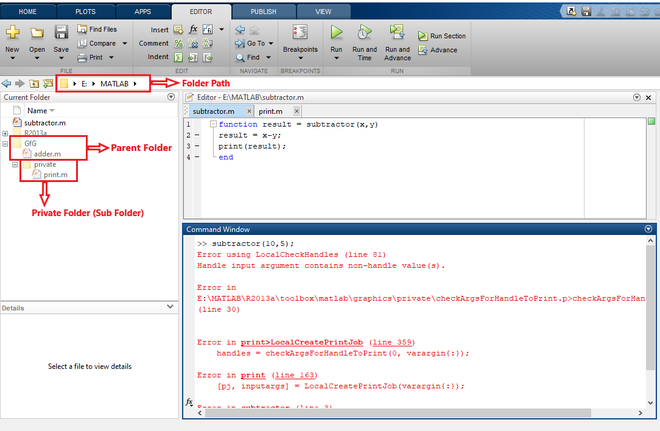

#MATLAB PRINT WINDOWS#
Windows chooses a correct paper type for the size. MATLAB sends the size you requested to the printer and Note: On Windows, printers often have multiple paper types that define the When youĮnter your own values, the paper type is set to. Make sure Units is setĪppropriately (to inches, centimeters, points, or normalized).

Windows, printer-specific paper types are only available from the graphical The examples include the printing of the statement on the command window in MATLAB as well as to display the graphs and to save its image. On UNIX you only have access to the built-in MATLAB paper types.

You can only specify these paper types using the Page Setup dialog box. These are defined by the current printer. For a list of MATLAB's built-in paper types, see MATLAB's Built-in Paper Types. For example, if you set the paper type to US Legal, MATLAB updates the width of the paper to 8.5 inches and the height to 14 inches.īuilt-In and Printer-Specific Paper Types Paper size and paper type settings are interrelated - if you set a paper type, MATLAB updates the paper size. If you do not set a paper size or type, MATLAB uses the default paper size of 8.5-by-11 inches. You can set the paper size by specify the dimensions or by choosing from a list of predefined paper types. For example, the paper type "US Letter" is 8.5-by-11 inches, and the paper type "A4" is 210-by-297 millimeters. It gives names to specific combinations of width, height and unit of measure. Paper type is a convenient way of referring to a certain paper size. For example, the width may be set to 8.5, the height to 11, and the unit of measure set to inches. Paper size is defined by a width and height, as well as by a unit of measure. But if you use evalc on a hardcoded string, EG in the example above evalc('disp(whos(''a''))'), then you should be fine.Setting up the Page (Printing and Exporting Figures with MATLAB) Printing and Exporting Figures with MATLAB
#MATLAB PRINT PC#
Just make sure you only ever use the evalc function if you can trust whatever will be used as the input EG if you allow the input to evalc to be generated from user input, the user could potentially input malicious code, EG that could run a system command which compromises files on your PC etc. > fprintf('%s\n', evalc('disp(whos(''a''))'))Įvalc was introduced into Matlab before R2006a, so you should have no problems with compatibility. See console session below, that fails when trying to print a struct directly using fprintf, and also when trying to use the output of disp, but succeeds when using evalc: > a = įunction is not defined for 'struct' inputs. Old question, but IMO, the easiest solution is to use the evalc function.


 0 kommentar(er)
0 kommentar(er)
